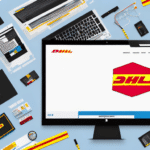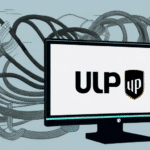ShipRush vs Ordoro: Comprehensive Comparison for E-commerce Businesses
Managing orders and shipments is a critical aspect of running a successful e-commerce business. With the increasing complexity of online retail, utilizing effective shipping software can streamline operations, reduce costs, and enhance customer satisfaction. In this comparison, we delve into two prominent solutions: ShipRush and Ordoro. We will evaluate their features, pricing, ease of use, integrations, and customer support to help you determine which platform best suits your business needs.
Overview of ShipRush
ShipRush is a robust shipping software designed to automate and simplify the shipping process for e-commerce businesses. It integrates seamlessly with major platforms such as Amazon, eBay, and Shopify, allowing users to manage orders, generate shipping labels, and track shipments from a centralized dashboard.
Key features of ShipRush include:
- Batch Processing: Print multiple shipping labels simultaneously, saving time and reducing manual effort.
- Rate Shopping: Compare shipping rates from various carriers like USPS, FedEx, and UPS to find the most cost-effective option.
- Real-Time Tracking: Provide accurate shipping rates and delivery dates to both businesses and customers.
- Customization: Tailor shipping labels and packing slips with company branding to enhance professionalism.
Overview of Ordoro
Ordoro offers comprehensive order and inventory management solutions tailored for online retailers. By centralizing inventory tracking, order processing, and shipping, Ordoro helps businesses maintain efficiency across multiple sales channels.
Key features of Ordoro include:
- Multi-Channel Integration: Connect with platforms like Amazon, eBay, Etsy, and Shopify to manage all orders in one place.
- Advanced Reporting: Utilize analytics tools to monitor sales performance and identify growth opportunities.
- Inventory Management: Track stock levels across various warehouses and set automated reorder points.
- Barcode Scanning: Quickly manage inventory and orders with built-in barcode scanning capabilities.
Feature Comparison
Order Management
Both ShipRush and Ordoro provide robust order management features, but they cater to different aspects of the process:
- ShipRush: Focuses on automating the shipping process, allowing users to sync orders from multiple platforms, batch process shipments, and automatically generate shipping labels based on predefined rules.
- Ordoro: Offers comprehensive order routing, tagging, and filtering, enabling businesses to split orders across multiple warehouses and prioritize fulfillment based on stock levels and delivery times.
Inventory Management
Inventory management is where Ordoro stands out:
- Ordoro: Provides detailed inventory tracking across multiple sales channels and warehouses, automated low stock alerts, and seamless integration with accounting software like QuickBooks and Xero.
- ShipRush: While ShipRush offers basic inventory tracking through integrations, it does not provide the advanced features available in Ordoro.
Shipping Options
When it comes to shipping, both platforms support major carriers but offer different functionalities:
- ShipRush: Supports USPS, FedEx, and UPS for domestic and international shipments. It offers rate comparison, scheduled pickups, and discounted shipping rates based on volume.
- Ordoro: In addition to USPS, FedEx, and UPS, Ordoro includes DHL and provides real-time shipping rates, customs forms for international shipping, and duty and tax calculations.
Pricing Models
Understanding the pricing structure is essential for selecting the right platform:
- ShipRush: Offers a flat monthly fee starting at $29.95 for up to 100 shipments. Additional shipments range from $0.10 to $0.80 each, depending on the volume.
- Ordoro: Begins at $59 per month for up to 150 orders. Beyond this, Ordoro charges $0.50 per order, with a maximum cap of $1,999 per month.
For businesses with fluctuating order volumes, ShipRush's scalable pricing might be more advantageous, whereas Ordoro could offer better value for consistently high order volumes.
Customer Support and Ease of Use
ShipRush
ShipRush provides customers with free phone and email support, comprehensive online documentation, and video tutorials. Its user-friendly interface is designed for ease of navigation, making it accessible even for those new to shipping software.
Ordoro
Ordoro offers email support, an extensive knowledge base, and video tutorials. Premium plans include phone support, though some users have noted longer wait times compared to ShipRush. The platform's interface is intuitive, but the breadth of features may present a steeper learning curve for new users.
Integrations
ShipRush Integrations
ShipRush integrates with over 60 e-commerce platforms, including Shopify, Magento, and BigCommerce. It also links with accounting software like QuickBooks and Xero, facilitating streamlined financial management.
Ordoro Integrations
Ordoro connects with more than 50 e-commerce platforms, including Amazon, eBay, and Etsy. Additionally, it integrates with warehouse management systems such as Skubana and various 3PL (Third-Party Logistics) providers, enhancing its versatility for complex operations.
User Reviews and Ratings
Both ShipRush and Ordoro have garnered positive feedback from users:
- ShipRush: Holds a rating of 4.5 out of 5 stars on Capterra and 4.4 out of 5 on G2. Users commend its intuitive interface, reliability, and effective rate shopping features.
- Ordoro: Achieves a rating of 4 out of 5 stars on Capterra and 4.2 out of 5 on G2. Users appreciate its comprehensive inventory management and multi-channel order processing capabilities.
Pros and Cons
ShipRush
- Pros: User-friendly interface, flexible pricing, efficient shipping automation, and strong rate comparison features.
- Cons: Limited inventory management capabilities, making it less suitable for businesses with complex inventory needs.
Ordoro
- Pros: Advanced inventory and order management features, extensive integrations, and robust reporting tools.
- Cons: Higher cost for smaller businesses, and the extensive feature set may be overwhelming for those with simpler needs.
Final Verdict: Choosing Between ShipRush and Ordoro
The decision between ShipRush and Ordoro hinges on your business's specific requirements:
- Choose ShipRush if:
- Your business has a high volume of shipments with limited inventory management needs.
- You prefer a straightforward pricing structure with the flexibility to scale based on shipment volume.
- Ease of use and quick setup are top priorities.
- Choose Ordoro if:
- Your business requires comprehensive inventory management across multiple sales channels and warehouses.
- You need advanced order routing, tagging, and filtering capabilities.
- Integration with various warehouse management systems and deeper analytics is essential.
Ultimately, evaluating your business's current and projected needs will guide you to the platform that offers the best balance of features, pricing, and scalability.
Implementation and Best Practices
Setting Up Your Platform
Implementing ShipRush or Ordoro involves a series of straightforward steps to integrate with your existing e-commerce setup:
- Sign Up: Register for an account on your chosen platform.
- Integrate E-commerce Platforms: Connect your online store(s) to synchronize orders and inventory.
- Configure Shipping Carriers: Select and connect your preferred shipping carriers to access real-time rates and tracking.
- Customize Settings: Tailor shipping labels, packing slips, and other settings to align with your brand and operational preferences.
- Start Processing: Begin managing orders, generating shipping labels, and tracking shipments through the platform.
Maximizing Platform Efficiency
To fully leverage the capabilities of ShipRush or Ordoro, consider the following best practices:
- Utilize Automation: Set up rules for automatic label generation, order routing, and inventory updates to save time and reduce errors.
- Optimize Batch Processing: Process multiple orders simultaneously to increase efficiency during peak periods.
- Integrate with Accounting Software: Link your shipping platform with accounting tools like QuickBooks or Xero for streamlined financial management.
- Monitor Analytics: Regularly review performance reports to identify trends, optimize shipping strategies, and improve operational efficiency.
- Provide Excellent Customer Service: Use automated tracking notifications to keep customers informed and enhance their shopping experience.
Common Mistakes to Avoid
When using ShipRush or Ordoro, it's crucial to steer clear of common pitfalls that can hinder your shipping and order management processes:
- Neglecting Automation Features: Failing to set up automation can lead to increased manual work and higher chances of errors.
- Improper Pricing Configuration: Ensure that your shipping costs are accurately calculated and incorporated into your product pricing to maintain profitability.
- Insufficient Data Backup: Regularly back up your data to prevent loss due to technical issues or breaches.
- Ignoring Compliance: Stay updated with shipping regulations and ensure all shipments comply with local and international laws.
- Underutilizing Integrations: Take full advantage of available integrations to enhance functionality and streamline operations.
By being mindful of these common mistakes, you can optimize your use of ShipRush or Ordoro and ensure smooth, efficient operations for your e-commerce business.




















